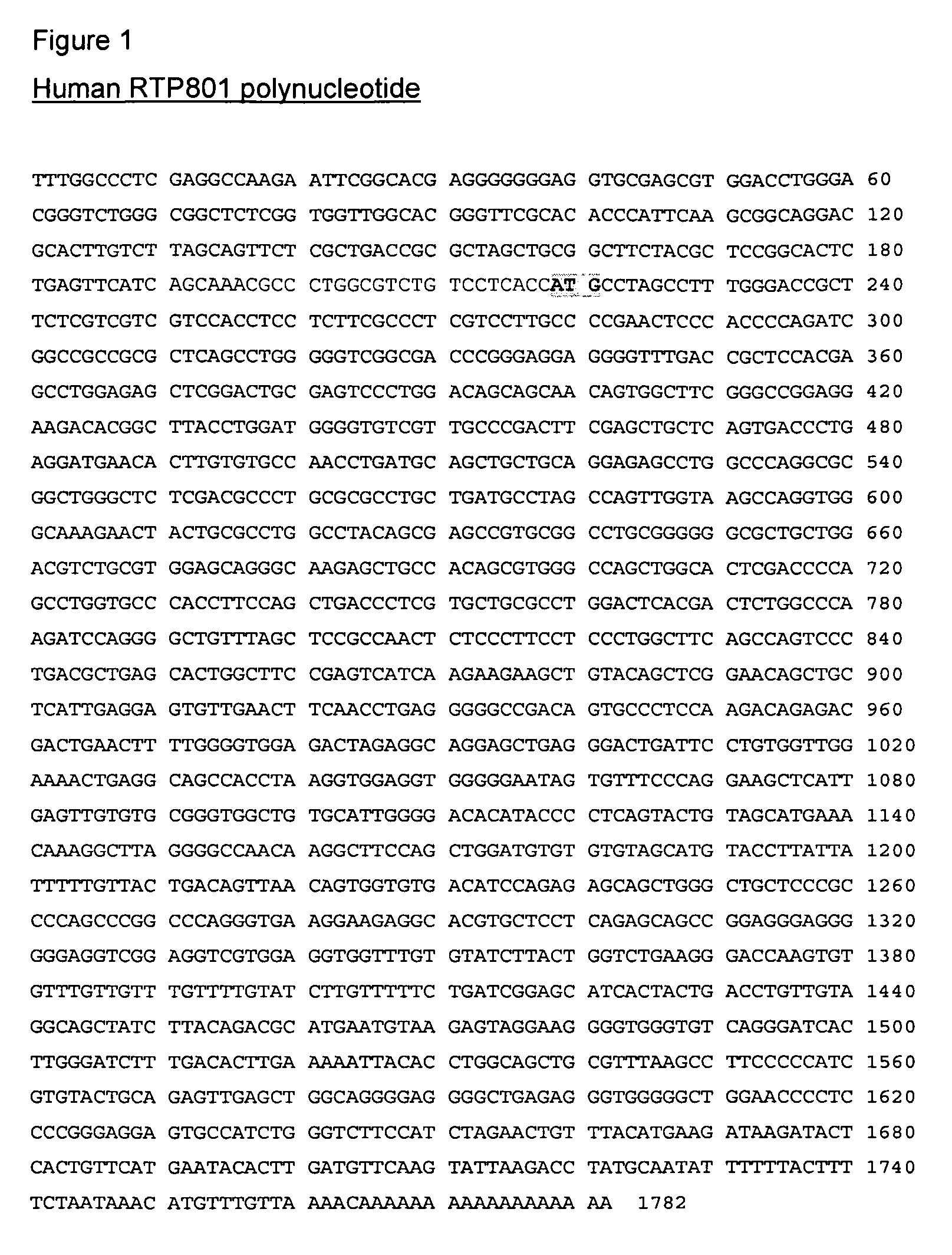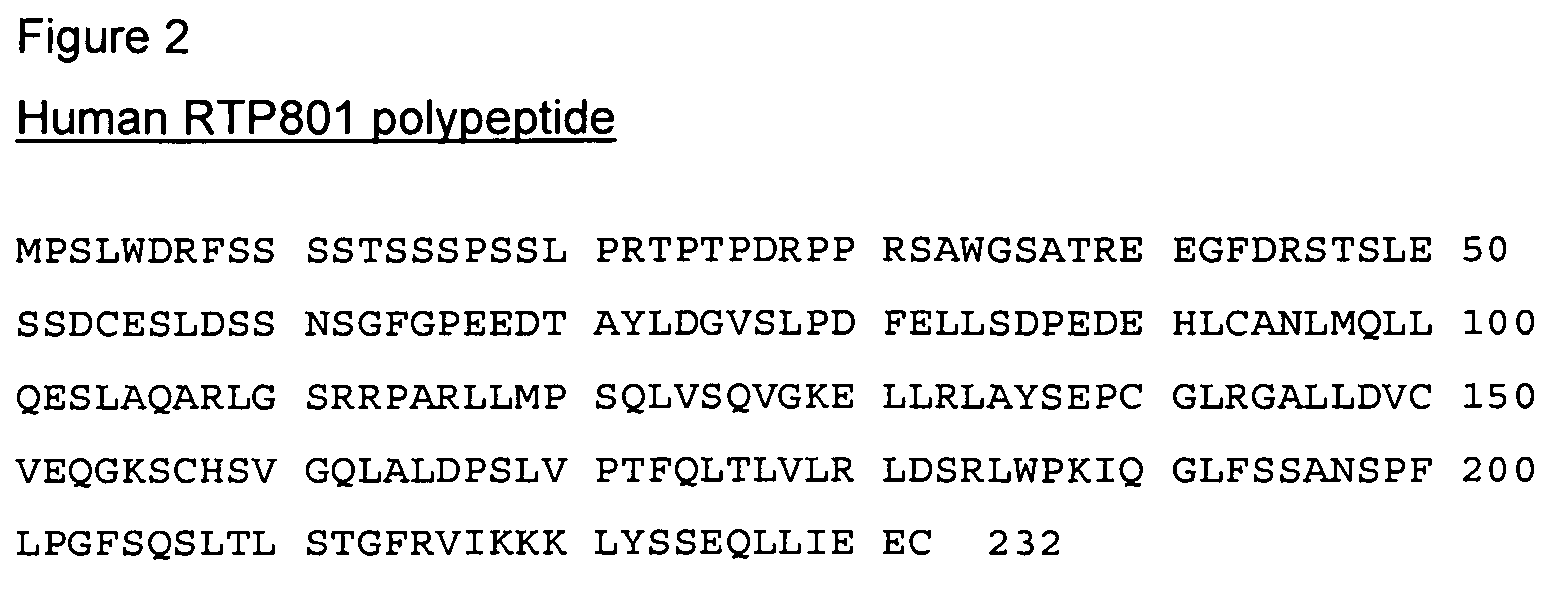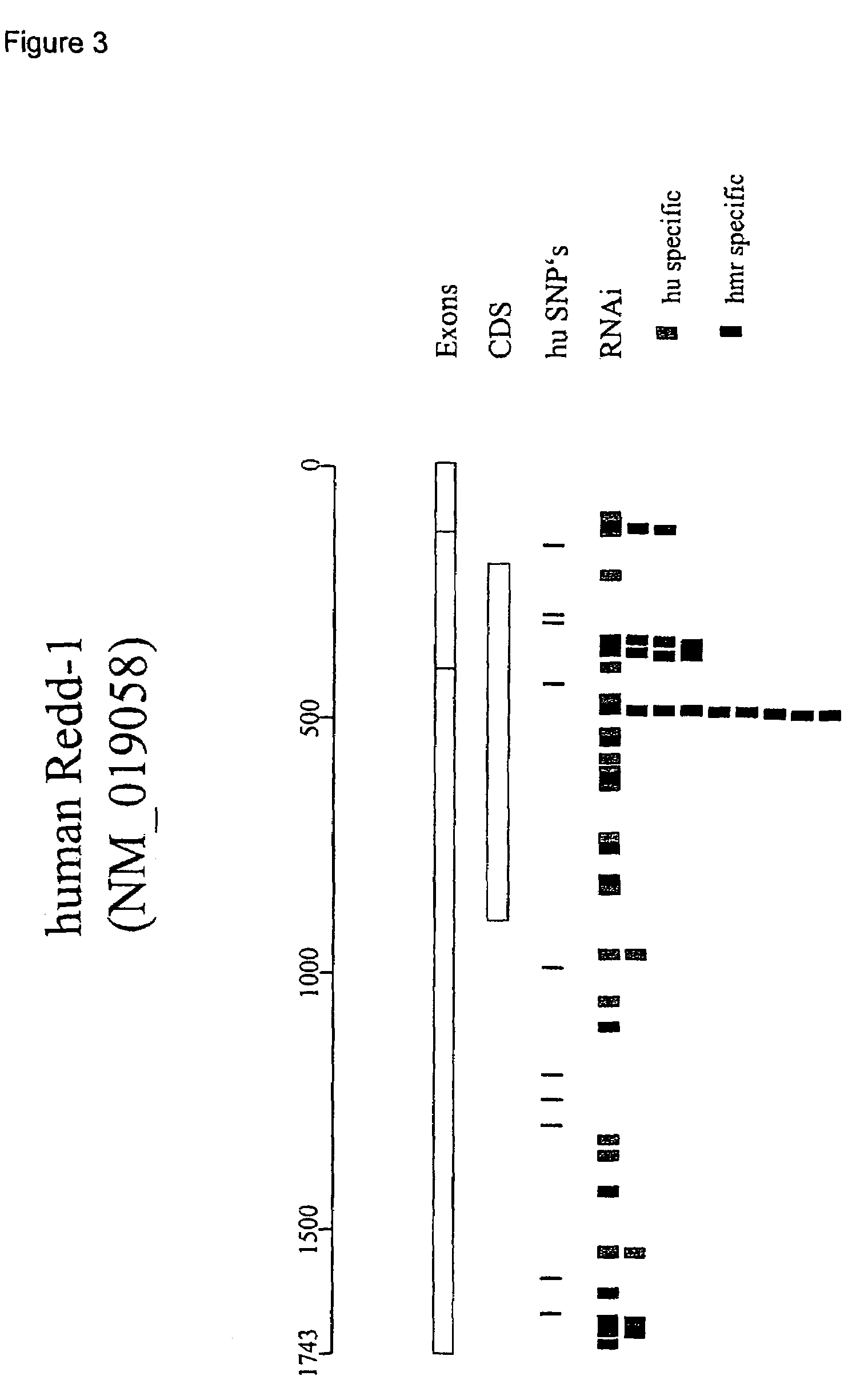Therapeutic uses of inhibitors of RTP801
a technology of rtp801 and inhibitors, applied in the field of sirna molecules, to achieve the effect of promoting recovery, promoting recovery, and promoting recovery
- Summary
- Abstract
- Description
- Claims
- Application Information
AI Technical Summary
Benefits of technology
Problems solved by technology
Method used
Image
Examples
example 1
General Materials and Methods
[0437]If not indicated to the contrary, the following materials and methods were used in Examples 1-5:
Cell Culture
[0438]The first human cell line, namely HeLa cells (American Type Culture Collection) were cultured as follows: Hela cells (American Type Culture Collection) were cultured as described in Czaudema F et al. (Czaudema, F., Fechtner, M., Aygun, H., Arnold, W., Klippel, A., Giese, K. & Kaufmann, J. (2003). Nucleic Acids Res, 31, 670-82).
[0439]The second human cell line was a human keratinozyte cell line which was cultivated as follows: Human keratinocytes were cultured at 37° C. in Dulbecco's modified Eagle medium (DMEM) containing 10% FCS.
[0440]The mouse cell line was B16V (American Type Culture Collection) cultured at 37° C. in Dulbecco's modified Eagle medium (DMEM) containing 10% FCS. Culture conditions were as described in Methods Find Exp Clin Pharmacol. 1997 May; 19(4):231-9:
[0441]In each case, the cells were subject to the experiments as ...
example 2
Reduction of RTP801 Expression in a First Human Cell Line
[0444]Various double-stranded nucleic acids were prepared. Their location relative to the mRNA and CDS as well as human SNPs in the nucleic acid coding for human RTP801 (databank accession no. NM—019058) is depicted in FIG. 3. The first human cell line was contacted with said double-stranded nucleic acids as described in example 1. Upon induction of a hypoxia-like condition and treatment with said double-stranded nucleic acids the cells were lysed and the cell lysates subjected to immunoblotting. p110a, which is a catalytic unit of the P13-kinase, and p85 were used as loading controls. The intensity of the RTP801 band as visualised using the RTP801 polyclonal antibodies is a measure of the activity of the individual double-stranded nucleic acids in terms of reducing the expression level of RTP801.
[0445]Each and any of the double-stranded nucleic acids has been such modified such that a 2′ O-Me group was present on the first, t...
example 3
Reduction of RTP801 Expression in a Second Human Cell Line
[0449]The experiments as described in connection with Example 2 were repeated using the second human cell line as specified in Example 1 and the results are depicted in FIGS. 5A to F.
[0450]As may be deduced from these figures, the results as obtained in connection with the experiments described in Example 2, were confirmed using this second human cell line.
PUM
| Property | Measurement | Unit |
|---|---|---|
| diameter | aaaaa | aaaaa |
| diameter | aaaaa | aaaaa |
| molecular weight | aaaaa | aaaaa |
Abstract
Description
Claims
Application Information
 Login to View More
Login to View More - R&D
- Intellectual Property
- Life Sciences
- Materials
- Tech Scout
- Unparalleled Data Quality
- Higher Quality Content
- 60% Fewer Hallucinations
Browse by: Latest US Patents, China's latest patents, Technical Efficacy Thesaurus, Application Domain, Technology Topic, Popular Technical Reports.
© 2025 PatSnap. All rights reserved.Legal|Privacy policy|Modern Slavery Act Transparency Statement|Sitemap|About US| Contact US: help@patsnap.com



